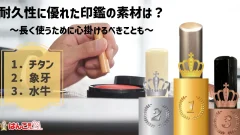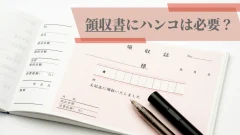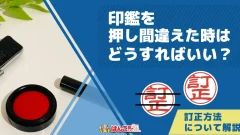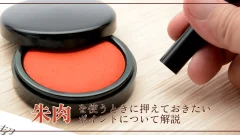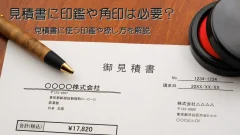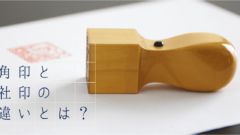Some people may say, "I don't know if it's a good idea to put a HANKO on the estimate." It is not necessarily necessary to affix a HANKO or square stamp to the estimate. However, if a HANKO or square seal is affixed to the estimate, it will be easier to recognize it as an "official document." We will explain why it is better to stamp your estimate with a HANKO or square seal.
It is not necessary to HANKO or square stamp on the estimate.
As mentioned above, a HANKO or square seal is not required on the estimate. Even if the estimate is not stamped with a HANKO or square seal, the validity of the estimate remains unchanged. However, if the HANKO is not stamped with a seal, it may not be recognized as an official document.
A quotation is a document that is presented to a business partner before a contract is signed, so it is better to stamp it with a HANKO and present it to the business partner as an ``official document issued by the company.'' This creates a sense of trust. For this reason, it is not necessary to have a HANKO or square stamp on the quotation, but it is a good idea to affix a HANKO or square stamp on the quotation to give your business partners peace of mind.
What is a quote?
A quotation is a document that the ordering party presents to the ordering party before entering into a contract, specifying the details of the transaction, such as the amount, quantity, delivery date, payment terms, etc. The purchaser confirms the transaction details listed in the quotation and then decides whether to place the order. Estimates may be subject to approval, so they are important documents that affect the relationship of trust with business partners.
About the role of quotation
Since the quotation is not a document for officially concluding a contract, a HANKO or square seal is not required. However, the quotation also has the role of establishing a relationship of trust between the receiving party and the ordering party before a contract is entered into. Let's understand the role of an estimate and look at why it's a good idea to stamp it.
Role 1. Check whether the ordering side and the receiving side are on the same page
The quotation is also used to confirm the transaction details written on the quotation by both the ordering party and the receiving party, and to align the understanding of the transaction details. If the explanation is given only verbally, there is a risk of misunderstanding, and it may lead to trouble due to "said" or "not said" exchanges.
It is important to clearly state the transaction details in the quotation and keep it as a document. Be careful not to miss anything and check each time that all necessary information is included. Furthermore, by stamping the HANKO with your seal, you can show your intention and trustworthiness that you have issued it as an "official document."
[Matters to be included in the estimate]
- Amount of money
- quantity
- deadline
- process
- Product and service details
- Payment Terms
- Orderer/order recipient information
- date of issue
- expiry date etc.
On the other hand, there are cases where the details of transactions and services are clearly stated on the website. If there is no difference in understanding between the receiving and ordering parties, a quotation is not necessary.
Role 2. Useful for "comparison estimate" to compare multiple estimates
When the ordering party submits estimates from multiple companies and compares and considers the purchase of products and services, it is called "competitive quotation." This is useful when the ordering party purchases a service or product with more benefits based on quotations provided by multiple companies. The most important thing in a quote is the details of the transaction, but if there is a small difference, it may be based on the person's personality and the reliability of the quote when compared with other companies.
About the retention period of estimates
A quotation is a supporting document. It is mandatory to keep it for a certain period of time. The storage period differs for corporations and sole proprietorships; for corporations, it is generally 7 years from the fiscal year in which the quotation was issued, and for sole proprietorships, it is generally 5 years from the tax return deadline for the fiscal year in which it was issued.
Why you should stamp your estimate
Since the estimate is a document used to present the details of the transaction before a contract is signed, it is not necessarily necessary to affix a HANKO or square seal. However, some companies do not consider documents without a seal as official documents. Unless there is a special reason, it is best to stamp the estimate.
Reason 1: Stamping the estimate becomes an “official document”
It has become a culture in Japanese companies to affix HANKO on documents, and some companies even consider it common sense and manners. Especially for companies with a long history or companies that value traditional customs, the presence or absence of a seal can have an impact on the company's image.
Even if a document does not require a seal, it may not be considered an official document without a seal. When creating a quotation, it is best to stamp it with your seal, except in special circumstances, to show that it is an official document issued by the company.
Reason 2: Having a stamp on the estimate gives a sense of trust and security.
In some cases, the ordering party receives the quotation and decides on the details of the transaction after approval. Approval requests often require the judgment and decisions of superiors and managers, and the trustworthiness of the company receiving the order is often considered important.
In these cases, whether there is a HANKO or square stamp on the estimate may be used to determine whether the company has properly approved and issued the estimate. It is a good idea to stamp the quotation with a HANKO to give the ordering party a sense of trust and security.
Which HANKO should I use for my estimate?
There are various HANKO for companies (corporations), but which one should be used for HANKO? We will introduce the types of corporate HANKO as well.
1. Square seal (company seal)
Kakuin is a HANKO with a rectangular impression, and is engraved with the company name or trade name, and is also used as a company seal. The purpose of affixing a square seal is to show that it is an "official document" for a corporation. In other words, it is best to affix a stamp on the estimate.
However, in the case of documents submitted to government offices, etc., a representative's seal (registered corporate seal) may be required. If you are doing business with someone for the first time, be sure to check which HANKO are valid.
Basically, there is no problem if you only affix a square stamp on the estimate, but it is recommended to affix the stamp of the person in charge in addition to the square stamp. By stamping the square seal, you can prove that it is an official document approved by the company, and by stamping the person in charge, you can clarify who was in charge of the document. If you stamp both the square stamp and the person in charge's stamp, you will give a more polite impression to the ordering party.
The square seal is stamped on not only estimates but also contracts, receipts, invoices, etc.
2. Representative seal (corporate registered seal, company registered seal, position seal)
The representative seal is also called a corporate registered seal, company registered seal, or position seal, and is the most important HANKO among company HANKO . Because of its round shape, it is sometimes called a round seal.
The representative seal has the role of proving the rights and obligations of a corporate representative. When establishing a company, a representative seal must be registered with the Legal Affairs Bureau, and a corporate HANKO is the registered HANKO. The representative seal is basically not used much in daily work.
3.Corporate bank seal
A corporate bank seal is a HANKO used by companies when conducting current transactions with banks. By submitting a notification to a financial institution and registering it, it will become effective as a corporate bank seal. Bills and checks issued by companies cannot be settled unless they are stamped with a corporate bank seal. On the other hand, if you have a corporate bank seal, you can make all payments related to a company's money, so you need to be careful when handling it.
Generally, in order to distinguish corporate bank seals from representative seals, it is recommended to use a HANKO that is one size smaller than the representative seal.
4. Seal
A personal seal is a HANKO that is mainly used by individuals, and is not an organizational HANKO like a representative seal or a corporate bank seal. When receiving a parcel, stamp it to indicate that you have confirmed it. It is a highly versatile HANKO that can be used in many situations on a daily basis. You can use a seal to affix your seal on the estimate, but it gives a slightly lighter impression, so it is better to use a square seal on the estimate.
In fact, all of the company's HANKO, except for the representative's seal, are registered seals. In other words, there is no problem in using the bank seal when receiving parcels. However, if a bank seal is used in situations where HANKO are used on a daily basis, there is a risk that the seal impression will be misused. To avoid trouble, it is best not to use a bank seal as your seal, but to prepare a separate HANKO for your seal.
There is also no problem in using a stamp-type HANKO, which is widely known as Shachihata, as the seal. However, there are some documents for which Shachihata cannot be used, so it is recommended to have both a HANKO and Shachihata.
5. Person in charge stamp
A person-in-charge seal is a HANKO used to clarify who is in charge of a particular job. When creating a quotation, by affixing the stamp of the person in charge along with the square stamp, you can show the client who created the quotation. However, since the person in charge's seal is a certified seal, there is a possibility that the person in charge may separately confirm that it was stamped by the person in charge.
6.Rubber stamp
A rubber stamp is a seal made of rubber and has the company name, representative name, TEL , address, etc. engraved on it. Rather than being used as a HANKO, it is used to improve work efficiency by eliminating the hassle of handwriting. However, it is still a HANKO created by the company, so you should handle it with care.
Is a HANKO required for the digitized estimate?
Recently, there has been an increase in the number of cases in which the ordering side requests us to convert the quotation into data such as a PDF file and send it to them. Even when a quotation is converted into data and issued, the role of the quotation itself remains the same. Therefore, it is better to affix a HANKO or square seal to the data-based estimate.
To stamp a quotation created from data, there is a method to create a document on a computer, print it, stamp it, and then scan it and convert it into data again. However, this method is very time-consuming and not very efficient. When issuing quotations as data, we recommend using an electronic HANKO rather than a physical HANKO .
An electronic HANKO is a digital HANKO that is converted into data and can be used to stamp electronic documents on a computer. There are two ways to create an electronic HANKO; one is to scan the seal imprinted on paper and save it as image data. The other type is an electronic identification that can be created using a paid service. No matter which electronic HANKO you use, the legal effect remains the same.
Even if it is a digital estimate, it is an important document for presenting the details of the transaction before signing a contract. It is a good idea to prepare an electronic HANKO as an alternative to a physical HANKO .
Precautions when using electronic HANKO
The number of situations in which electronic HANKO are used is gradually increasing, but not all companies have adopted electronic HANKO. There is no problem if the ordering side requests a digitized estimate, but there may be cases where the ordering side wants to send a digitized estimate.
In this case, please check in advance whether your business partner supports electronic HANKO before sending the quotation. This is because many companies do not allow the use of electronic HANKO.
Also, when using electronic HANKO, be sure to ensure security. Electronic HANKO can be easily created by simply saving the seal impression as image data, but there is a high risk that the seal impression data will be misused. When using an electronic HANKO for transactions outside the company, consider using an electronic HANKO that has identification information added to the seal impression.
Electronic HANKO with identification information can be used with a paid electronic HANKO service. Since the serial number and user information can be confirmed from the seal imprint, security can be maintained by preventing misuse or falsification of the seal imprint.
summary
A quotation is a document that allows the receiving party to present the details of the transaction to the ordering party before signing a contract. It is not necessary to have a HANKO or square stamp on the estimate, but by affixing a seal, the estimate will be seen as an ``official document issued by the company.''
However, even if you do not stamp the quotation, the validity of the quotation will not change. However, it is good etiquette in Japanese companies to stamp documents with a HANKO, and it is better to do so unless there are special circumstances. Whether the estimate is data or paper, it is better to use a HANKO or square seal to build a relationship of trust with the business partner.
 日本語
日本語 English
English 简体中文
简体中文 繁體中文
繁體中文 한국어
한국어 ไทย
ไทย Tiếng Việt
Tiếng Việt Indonesia
Indonesia Français
Français Español
Español Português
Português
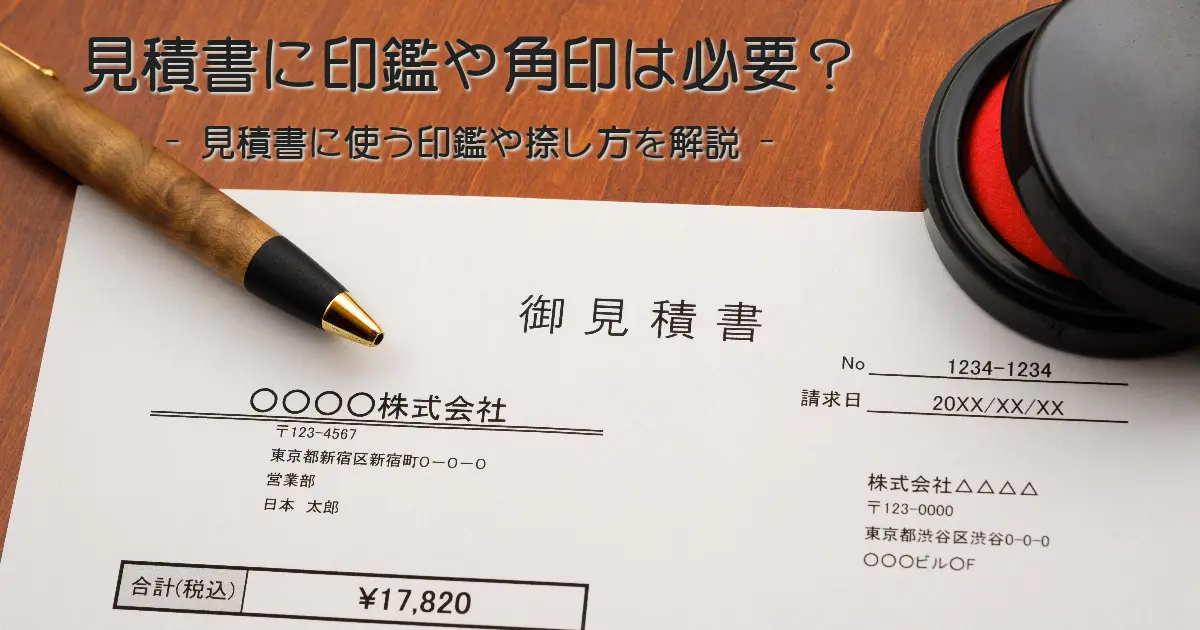


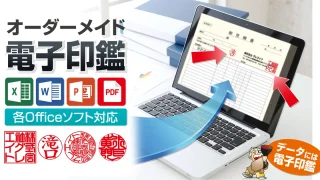
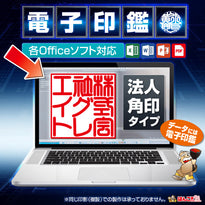 Electronic HANKO corporation Kakuin type
Electronic HANKO corporation Kakuin type Electronic HANKO personal identification seal type
Electronic HANKO personal identification seal type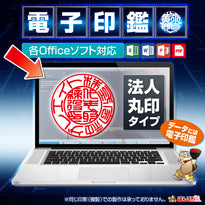 Electronic HANKO corporation round seal type
Electronic HANKO corporation round seal type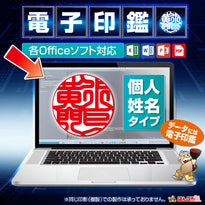 Electronic HANKO personal name type
Electronic HANKO personal name type Voucher printing
Voucher printing Quotation iPM-01 Standard slip printing
Quotation iPM-01 Standard slip printing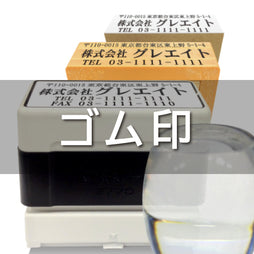 rubber stamp
rubber stamp electronic HANKO
electronic HANKO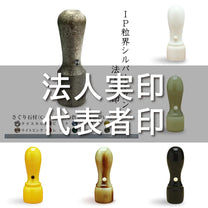 Corporate registered seal Company/corporate HANKO
Corporate registered seal Company/corporate HANKO Corporate bank seal Company/corporate HANKO
Corporate bank seal Company/corporate HANKO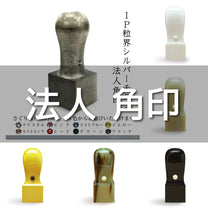 Corporate square seal HANKO for companies/corporates
Corporate square seal HANKO for companies/corporates Establishment 4-piece set company/corporate HANKO
Establishment 4-piece set company/corporate HANKO Establishment 3-piece set company/corporate HANKO
Establishment 3-piece set company/corporate HANKO Name stamp Penetration stamp/Shachihata
Name stamp Penetration stamp/Shachihata

